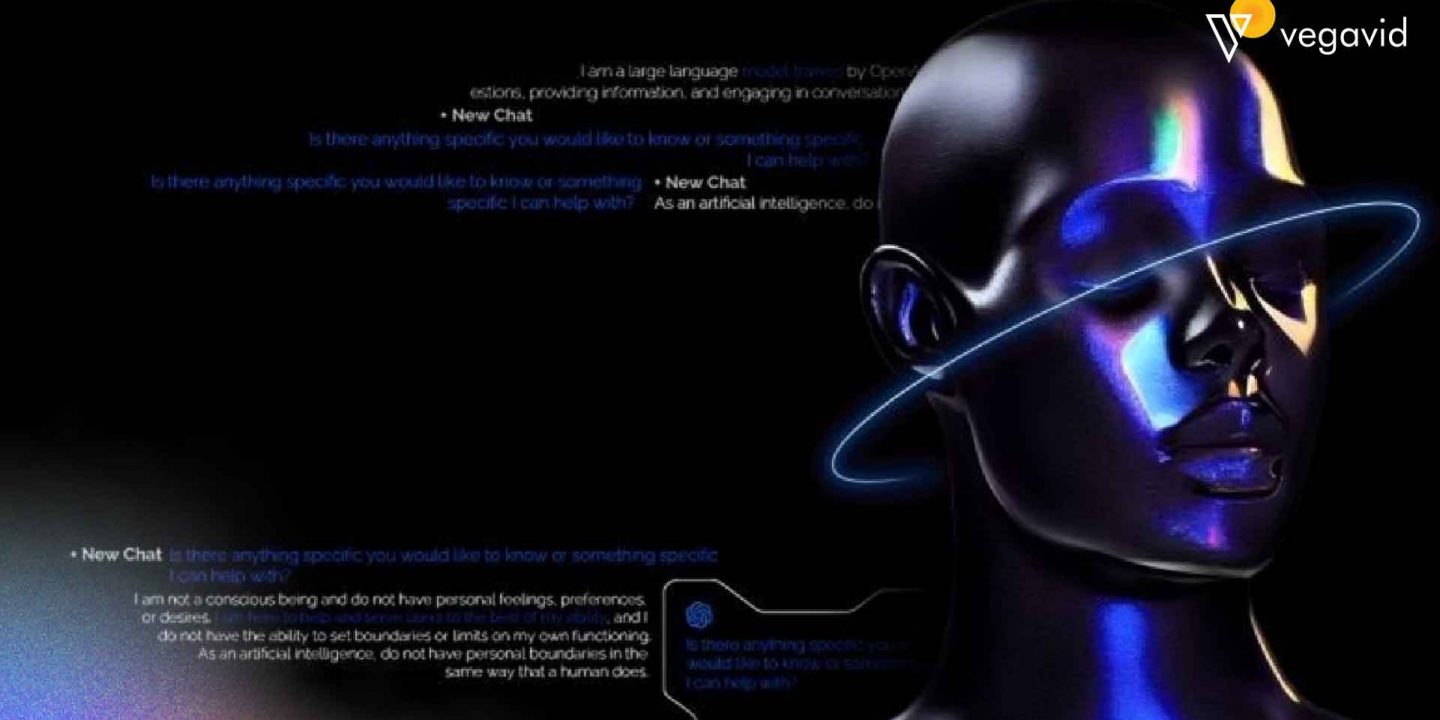
ChatGPT and other large language models have generated a lot of buzz for their ability to carry on articulate conversations and provide informative responses to complicated questions. But what enables these systems to comprehend language at such a high level?
At the core of their capabilities lies embedding techniques – how words and phrases are represented within the model’s architecture. Embeddings map words to high-dimensional vectors that capture their meanings, contexts, and relationships with other words.
This vector representation allows the models to “understand” words in a way that their complex neural networks can process. Embeddings are used to initialize the models and are continually updated during training.
While early approaches used static pre-trained embeddings, more advanced techniques that vary by context have emerged. However, limitations remain around embedding nuance, databases, conceptual understanding, and data efficiency.
What are embeddings in natural language processing?
Embeddings convert words into numbers. This helps computers process language. An embedding captures a word’s meaning and relations with other words. Words with similar meanings get closer positions in the embedding space.
There are different ways to create embeddings. Simple methods assign random numbers to words. Better methods train embeddings with machine learning on large text. Training creates “word vectors.” Each word gets a multi-dimensional vector. Vectors for similar words point in similar directions.
Models use embeddings to understand the text. They can see that “good” and “excellent” have close vectors, showing similarity. Embeddings reduce sparsity and dimensions in language. They make the language easier for algorithms to analyze. This helps with tasks like sentiment analysis, text classification, and machine translation.
Different types of word embeddings
Word embeddings are vector representations of words that capture their meanings and semantic relationships. There are several ways to create word embeddings, each with pros and cons.
- One simple approach is one-hot encodings, where each word is assigned a unique index and represented as a sparse vector. This does not capture any semantic information about the words.
- Better approaches train word embeddings from large text corpora using neural networks. These trained embeddings, like Word2Vec and GloVe, learn the most useful representations.
- Word2Vec uses a neural network to predict neighboring words from a target word. It has two architectures: CBOW and skip-gram.
- GloVe is a statistical model that learns word embeddings from global word-word co-occurrence counts. It produces semantically meaningful word vectors.
The most advanced embeddings are contextualized, assigning different vectors to the same word based on its context. Models like ELMo, ULMFiT, and BERT use contextual embeddings to represent different meanings of words.
The architecture of ChatGPT-like Models
ChatGPT and other large language models have a Transformer-based architecture. They consist of encoder and decoder stacks of Transformer blocks. The encoder transforms the input into a sequence of vectors that represent the meaning and context of the text. The input could be a question, instruction, or prompt.
The decoder generates the output text – the predicted response, explanation, or completion. It works auto-regressively, predicting the next token based on the previously generated tokens and the encoder output.
Within each Transformer block are self-attention layers and feed-forward layers. The self-attention layers allow the model to learn contextual relationships between all tokens in the input and output sequences.
ChatGPT has 175 billion parameters, compared to GPT-3’s 175 trillion parameters. Despite having fewer parameters, ChatGPT was trained on more filtered, high-quality web text. ChatGPT’s increased precision comes at the cost of flexibility and breadth of knowledge compared to GPT-3. It tends to provide more specific responses tailored to the prompt.
Word Embeddings in ChatGPT-like Models
ChatGPT and other large language models rely heavily on word embeddings to represent words and understand language. Pre-train word embeddings are used to initialize the model’s embedding layers.
The model’s encoder contains an embedding layer that converts input tokens into vector representations. These word embeddings capture the syntactic and semantic properties of words that help the model understand their meanings and relationships.
The word embeddings are continuously updated and fine-tuned during the model’s training process. As the model sees more text and learns patterns in language, it adjusts the word vectors to better reflect those patterns and relationships.
ChatGPT was initially trained using Word2Vec-style continuous bag-of-words word embeddings. This helps the model understand the context and meaning of words based on their surrounding words.
However, ChatGPT and similar large models have since moved to more advanced contextual word embeddings that vary based on the specific usage of a word. This provides a more nuanced understanding of polysemous words with multiple meanings.
Semantic Understanding and Context
Semantic understanding – the ability to derive meaning from language – is essential for natural language processing tasks like question-answering, summarization, and dialog systems. This requires understanding the relationships between words based on their meaning and context of use. Word embeddings and knowledge graphs help capture some semantic knowledge, but context is also critical. Context provides the situational information that affects word meaning and discourse. Context can come from various sources:
- Linguistic context refers to the surrounding words and sentences that provide semantic cues. Models utilize linguistic context, for example through attention mechanisms, to understand how words relate.
- Real-world knowledge and commonsense provide broader contextual information that informs interpretation. Knowledge graphs and databases can supply some of this context.
- Task context refers to the specific NLP application domain that shapes how language is interpreted. For example, medical vs. legal domains use language differently.
Transfer Learning and Pretrained Embeddings
Training deep neural networks from scratch requires vast amounts of data and computational resources. Transfer learning techniques allow models to leverage knowledge gained from one task and apply it to another related task.
One form of transfer learning is using pre-trained word embeddings. Word2vec and GloVe produce vector representations of words trained on large corpora. These pre-trained word embeddings capture semantic and syntactic properties that are generally useful across NLP tasks.
Models can initialize their embedding layers with pre-trained word vectors instead of random values. This gives the model a “head start” with some basic language knowledge before it begins training for its specific task. The embeddings are then fine-tuned during task-specific training.
Models can use these pre-trained transformers as feature extractors, freezing most of the layers and fine-tuning only the last layer for their task. This transfers the general linguistic knowledge from the pre-trained model.
Fine-Tuning Embeddings
When using pre-trained word embeddings for a natural language processing task, fine-tuning the embeddings during training can improve performance. The initial pre-trained embeddings provide a good starting point, but they are generated from a general corpus using a generic objective.
To optimize for a specific task, the embeddings can be fine-tuned through backpropagation and gradient descent updates during task-specific training. The model learns small corrections to the initial embeddings that help discriminate between different classes or outputs for the task.
Fine-tuning allows the embeddings to adapt based on the specific data distribution, labels, and optimal decision boundaries for the new task. This often results in more accurate semantic and syntactic representations of words that are tailored to the nuances of the target task, leading to better overall performance of the model.
Limitations and Challenges of Embeddings in ChatGPT-like Models
While embeddings help ChatGPT and similar large language models understand language to some extent, they still face several limitations:
- Static embeddings: The static word vectors used in earlier models like ChatGPT cannot represent different senses of the same word based on context. This reduces the nuance and accuracy of the model’s responses.
- Data biases: The text used to train the embeddings and language models can introduce social and cultural biases that are reflected in the model’s output. Efforts are being made to mitigate these biases.
- Difficulty with abstraction: Though embeddings capture semantic relationships between concrete words well, they struggle with abstract concepts that are not explicitly stated in the training data.
- Lack of commonsense: While embeddings encode syntactic and semantic properties, they still fall short of capturing commonsense knowledge about the world. This limits the model’s understanding and generative abilities.
- Data efficiency: Training ever-larger language models require massive amounts of data and computational resources, which is unsustainable. Researchers are exploring more data-efficient techniques.
Advancements in Embedding Techniques for ChatGPT-like Models
Researchers are developing improved embedding techniques to address some limitations of ChatGPT and similar large language models. Advancements include:
- Contextualized embeddings vary by word usage, capturing different meanings. This helps address issues with static embeddings.
- Multisense embeddings encode multiple meanings of polysemous words.
- Injecting knowledge graph embeddings to encode more commonsense and world knowledge.
- Training embeddings jointly with the language models. Earlier models used per-train embedding that was fixed.
- Using more sophisticated training techniques like self-supervised learning and reinforcement learning to improve data efficiency.
- Reducing embedding dimensions to reduce model parameters and increase efficiency.
Conclusion
Embeddings play a critical role in ChatGPT and other large language models’ ability to understand and generate human-like language. Word embeddings represent words as vectors that capture semantic relationships, allowing the models to grasp word meanings and contexts. While pre-trained embeddings provide a good starting point, fine-tuning the embeddings during training helps optimize them for a model’s specific task and dataset. This improves performance.
However, static embeddings in early models have limitations. Researchers are developing more advanced embedding techniques like contextualized embeddings and knowledge graph embeddings to address issues like lack of commonsense and data inefficiency.











